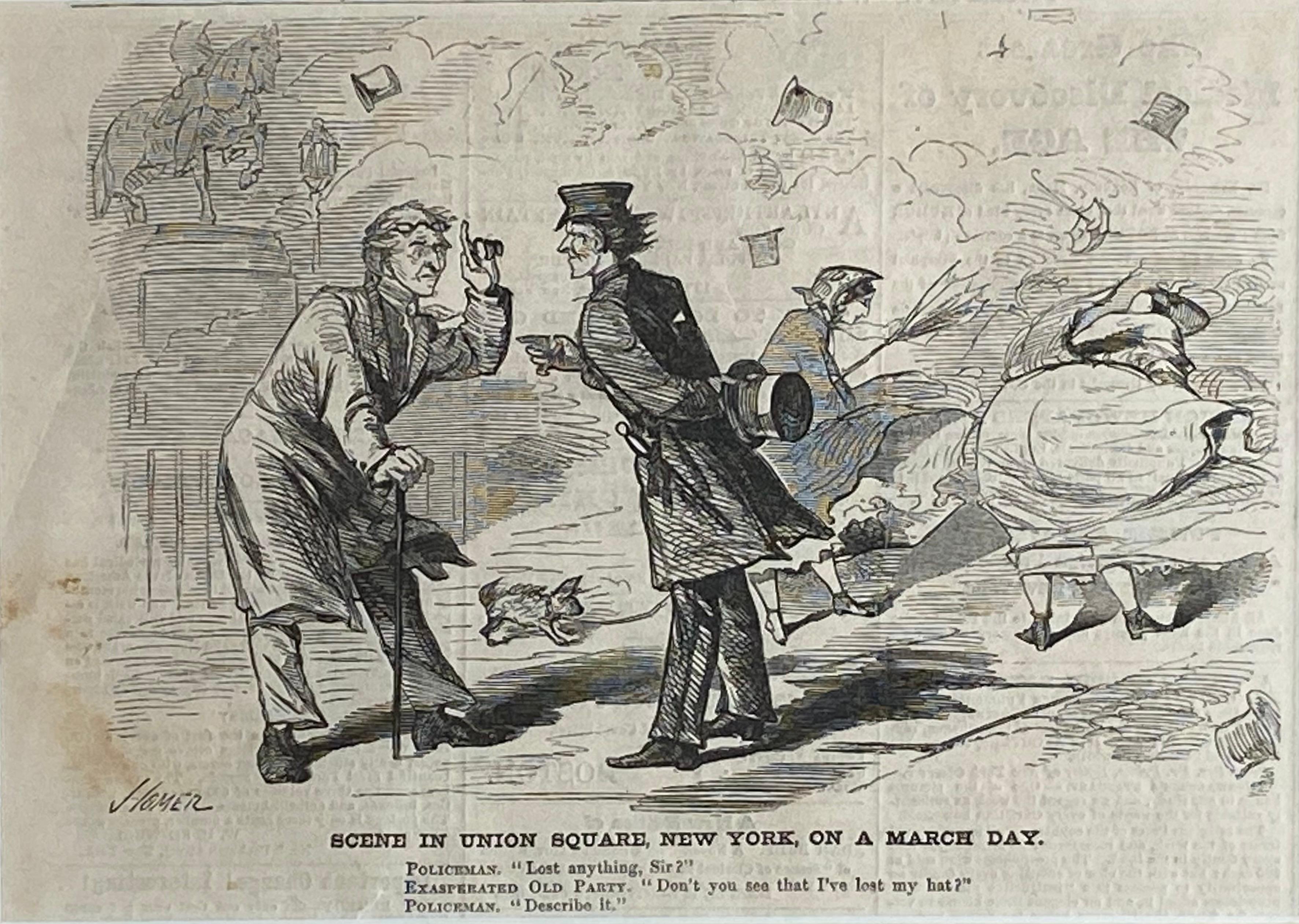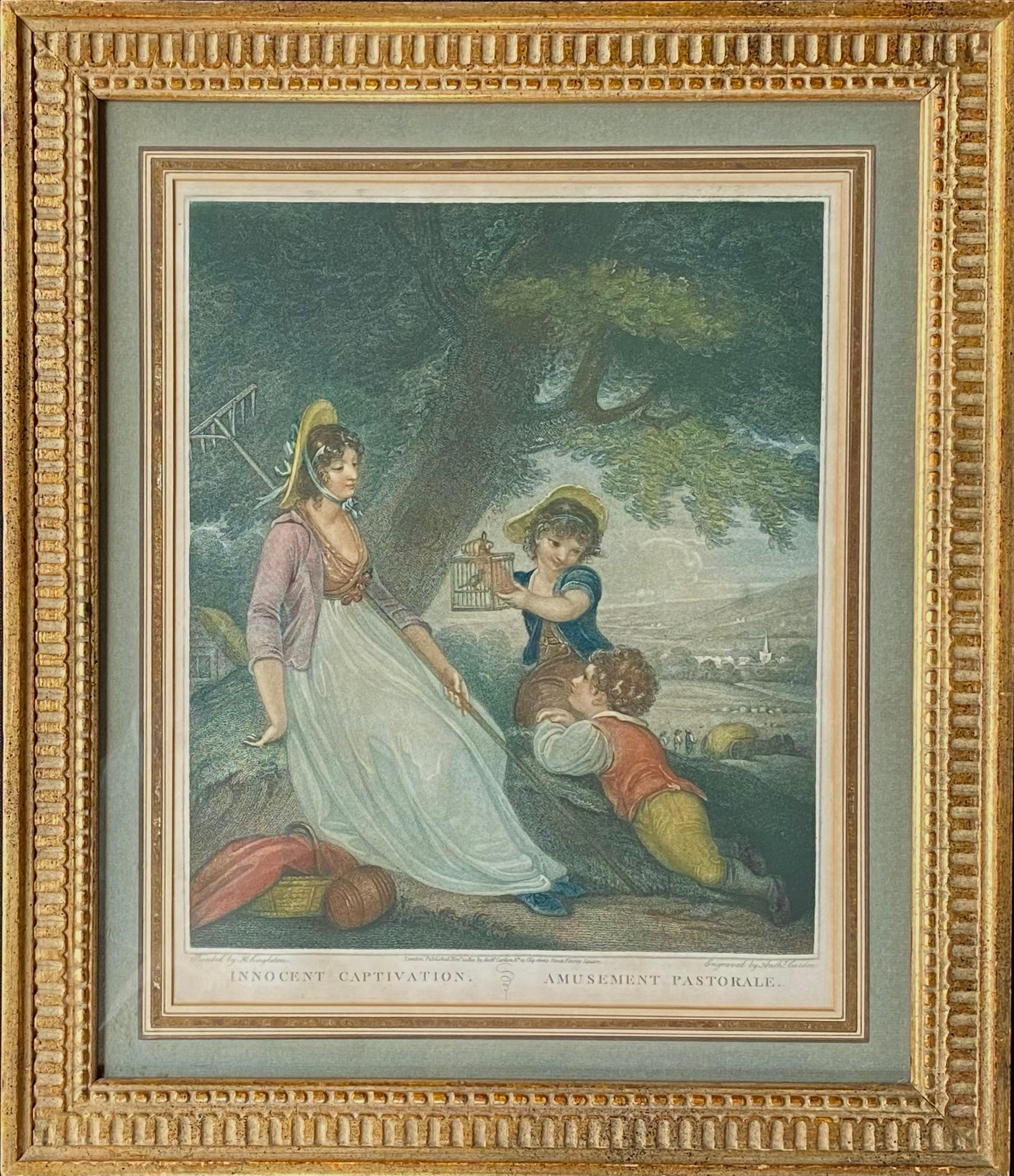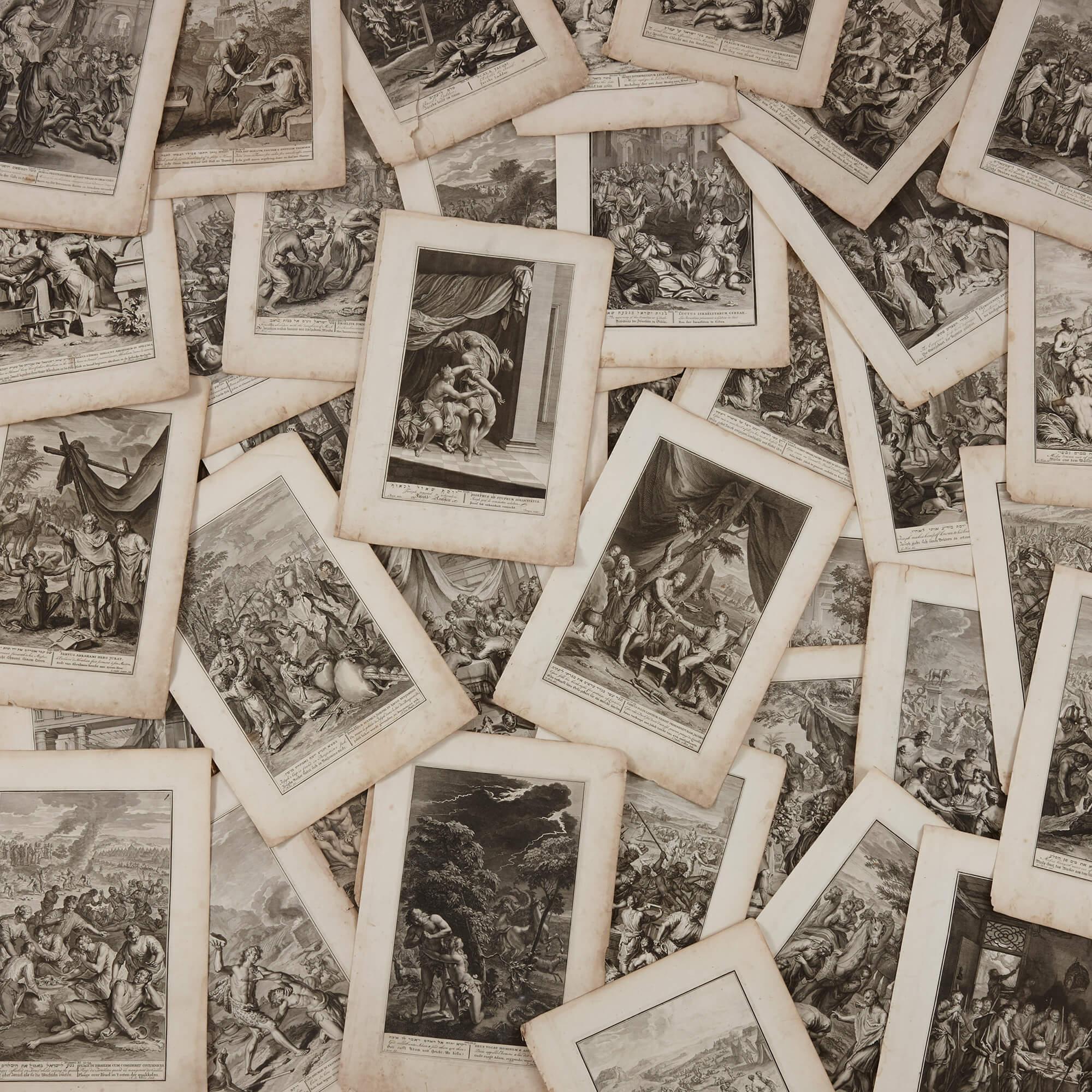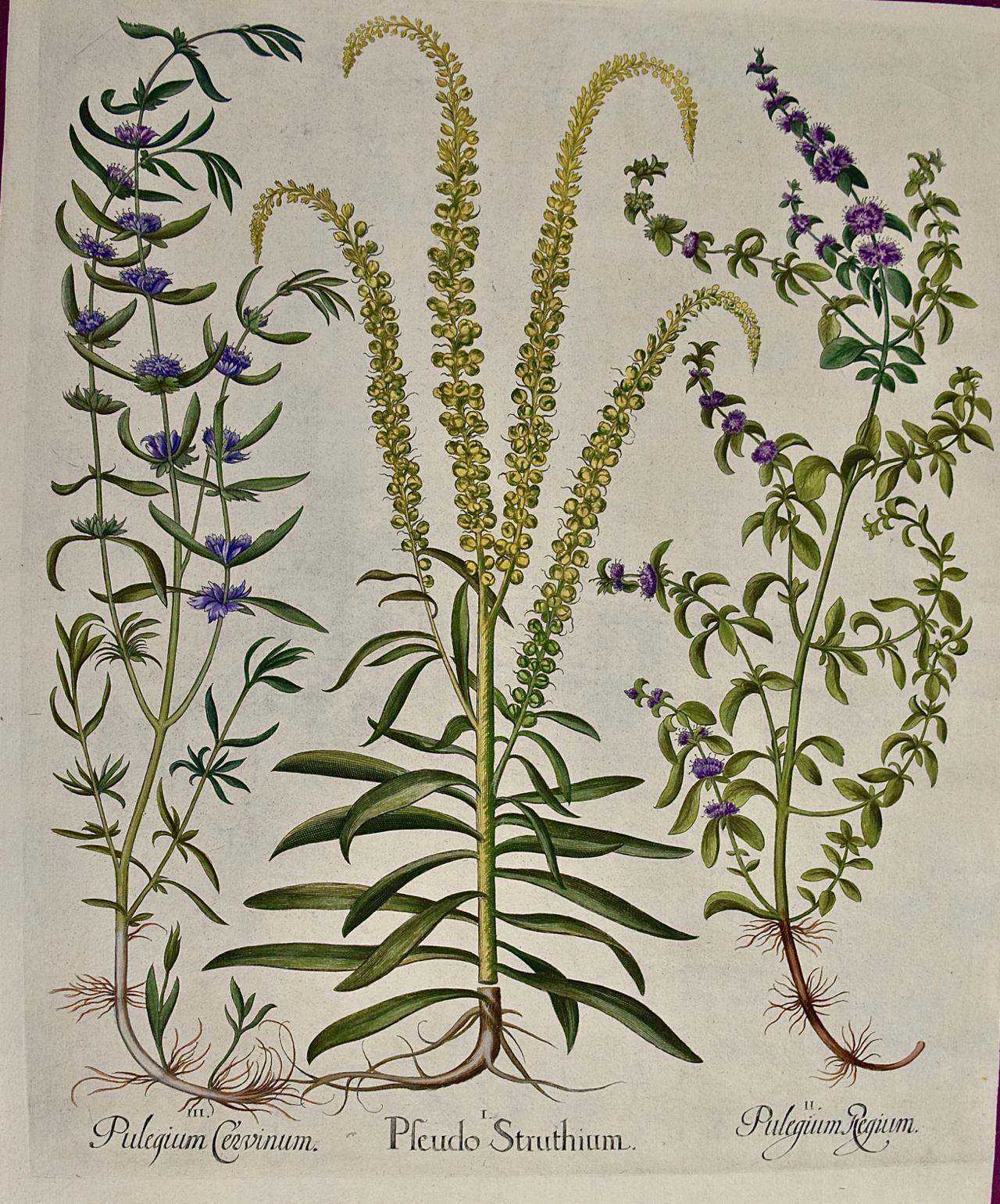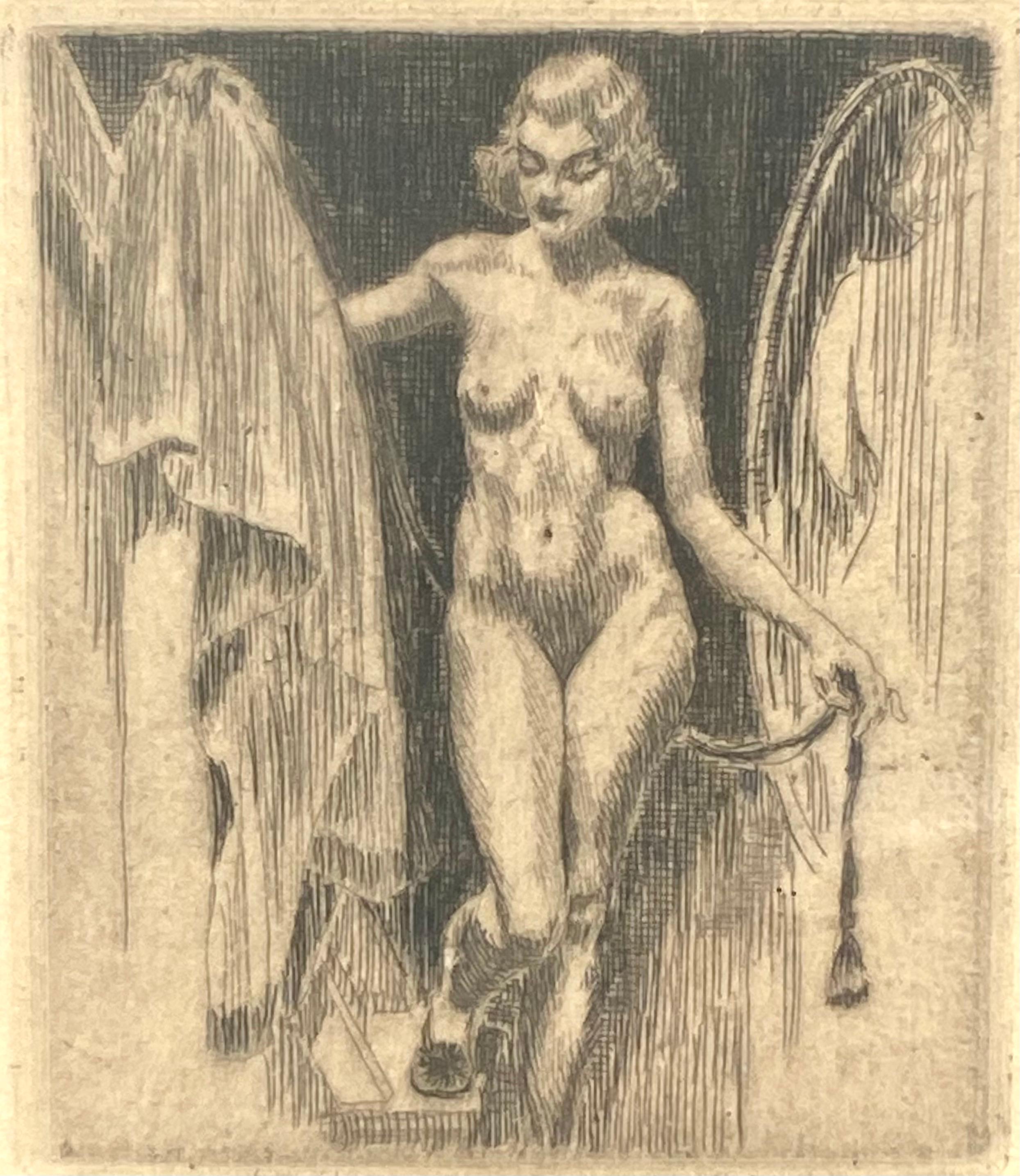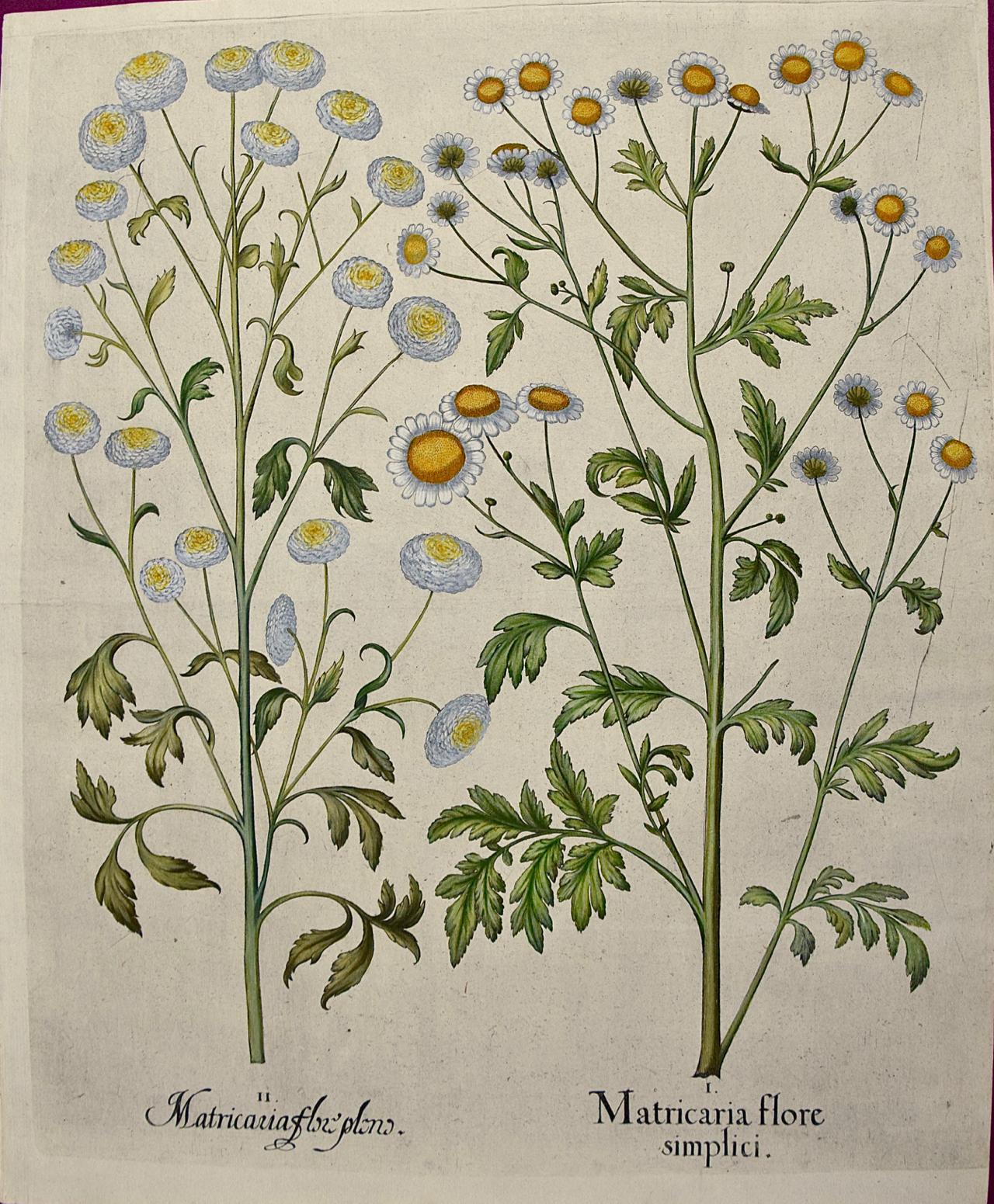Items Similar to George Sidney Hunt After Edwin Long RA, In the Wilderness, Engraving
Want more images or videos?
Request additional images or videos from the seller
1 of 12
George Sidney HuntGeorge Sidney Hunt After Edwin Long RA, In the Wilderness, Engraving1892
1892
About the Item
This late 19th-century mixed-method engraving by George Sidney Hunt (1856-1917) after Edwin Long RA (1829-1891) is one in a series of three depicting the Old Testament story of Jephthah. Here, we see Jephthah’s daughter contemplating her fate during a two-month sojourn in the wilderness.
The heart-rending story of Jephthah captured Victorian minds and inspired artist Edwin Long to produce three exhibition pieces, which are now held at the Russell Cotes Art Gallery & Museum. Prior to a fearsome battle with the Ammonites, Jephthah, a leader in Isreal, committed a vow to God that he’d make a sacrifice if his armies were triumphant.
“whatever comes out of the door of my house to meet me when I return in triumph from the Ammonites will be the Lord’s, and I will sacrifice it as a burnt offering” (Judges 11:30-31).
Alas, upon returning, his only daughter danced into his arms - unaware of the tragic consequences of her innocent actions. Hence, her sacrifice was set in stone - her father’s oath had condemned her to death. “Oh no, my daughter! You have brought me down and I am devastated. I have made a vow to the Lord that I cannot break …” (Judges 11:35).
Commissioned by fine arts publisher, Fairless and Beeforth, Edwin Long’s trilogy describes three dramatic moments - ‘Jephthah’s Vow’, ‘Into the Wilderness’, and ‘The Martyr’. Here, we see part two, Jephthah’s daughter (who remains nameless), contemplating her fate among companions during a two-month stay in a barren landscape. She looks towards the heavens, forlorn, only too aware of her destiny. To her left, a close friend prays for her salvation, while another grieves tearfully at her feet.
Edwin Long’s historical works gained great popularity within the educated world of the Royal Academy whereby such scenes were deemed worthy of painterly inspiration. Together with contemporaries such as Frederic Leighton (1830-1896), Albert Joseph Moore (1841-1893), and Lawrence Alma-Tadema (1836-1912), Long sought to elevate his art with aesthetically-pleasing classical references. During the ‘Victorian Classical Revival’, numerous works portrayed scenes from antiquity - many featuring young women draped in dramatic circumstances.
Long’s model here is particularly poignant. Indian Princess, Helen Ahluwalia Randhir Singh of Kapurthala, posed for many of the artist’s popular works but, was herself, the subject of a tragic story. Following the divorce of her parents, mother Rani Henrietta brought her to London, presumably to meet a worthy suitor. However, she quickly became immersed in London’s high society, often attending various parties unchaperoned - thus causing significant controversy. At 23, she died of Tuberculosis - just two years after Long produced the trilogy. With this in mind, it’s rather interesting to consider her mindset when playing the lead role in a tale of parental-led sacrifice.
Signed in pencil by engraver George Sidney Hunt lower right and held within a contemporary glazed frame.
- Creator:George Sidney Hunt (1856 - 1917, British)
- Creation Year:1892
- Dimensions:Height: 32.5 in (82.55 cm)Width: 23.5 in (59.69 cm)
- Medium:
- Movement & Style:
- Period:
- Condition:Artwork presents well. A few marks bottom right.
- Gallery Location:Cheltenham, GB
- Reference Number:1stDibs: LU2328211651492
About the Seller
5.0
Platinum Seller
These expertly vetted sellers are 1stDibs' most experienced sellers and are rated highest by our customers.
Established in 2017
1stDibs seller since 2023
132 sales on 1stDibs
Typical response time: 1 hour
- ShippingRetrieving quote...Ships From: Cheltenham, United Kingdom
- Return PolicyA return for this item may be initiated within 14 days of delivery.
More From This SellerView All
- 18th-Century Engraving, Ancient English DressesLocated in Cheltenham, GBThis late 18th-century engraving from Thomas Bankes’ ‘New and Authentic System of Universal Geography’ depicts the evolution of ladies' fashion between 1590 and 1630. In this unusua...Category
18th Century English School Figurative Prints
MaterialsPaper, Engraving
- Albert Kruger After Max Liebermann, The Flax Barn at Laren, EtchingLocated in Cheltenham, GBThis late-19th-century etching by German draughtsman Albert Kruger (b. 1858) is after a painting by Max Liebermann (1847-1935). The rhythmical monotony of the spinners, organised like a rigid machine, echoes through the low barn. Youths, hunched by square windows, wind flax onto spindles. While women stand in clogged feet, working tirelessly with aching bones. Liebermann captured their daily grind with aplomb, avoiding sentiment in favour of laborious reality. Yet, amid this harsh environment, he celebrates their efforts. The composition conveys determination with its lines and strong verticals while the atmosphere is one of steel rather than tortuous circumstance. Liebermann was a realist yet he found light among the ordinary. Originally published in The Art Journal...Category
1890s Victorian Interior Prints
MaterialsPaper, Etching
- Axel Wallert, Seated Woman With Mandolin, EtchingLocated in Cheltenham, GBThis exquisite early 20th-century etching by Swedish artist Axel Wallert (1890-1962) depicts a seated woman playing the mandolin. It’s brimming with style yet captured with sensitivi...Category
1910s Post-Impressionist Figurative Prints
MaterialsPaper, Etching
- 19th-Century Fashion Advertising, Our Styles For The Present Season, LithographLocated in Cheltenham, GBThis charming late 19th-century lithograph was produced by Freudenthal & Co for clothing manufacturers, TJ Thomas & Ellis Jones, to showcase the latest fashion. There are 17 styles including the DB Gladstone (after the Prime Minister), Ulster, Demi Sac, Tourist Blouse, Frock Coat and D B Prince Alfred. There’s also a Riding Habit for the lady. TJ Thomas & Ellis Jones were based at 138 Queen Victoria Street...Category
19th Century English School Figurative Prints
MaterialsPaper, Lithograph
- Paul & Vigier, Set Of Four Examples Of French Room Decoration, HeliogravuresLocated in Cheltenham, GBThis stylish set of four early 20th-century French heliogravures depict various combinations of bedroom furniture from the period. They were published by Paul & Vigier and provide an...Category
Early 20th Century Academic Interior Prints
MaterialsPaper, Photogravure
- Henry Robert Robertson, Ave Maria, EtchingBy Henry Robert RobertsonLocated in Cheltenham, GBThis fine late 19th-century etching by British artist Henry Robert Robertson (1839-1921) depicts a couple worshipping a shrine to the Virgin Mary at sea. The original painting was ex...Category
19th Century Academic Landscape Prints
MaterialsPaper, Etching
You May Also Like
- “Scene in Union Square, New York on a March DayBy Winslow HomerLocated in Southampton, NYOriginal wood engraving on paper. Taken from Harper’s Weekly, April 7, 1860. Signed “Homer” in the plate. Condition is good. Slight staining lower left. Very slight tear to the l...Category
1860s Academic Figurative Prints
MaterialsArchival Paper, Engraving
- “Innocent Captivation Amusement Pastorale”By Anthony CardonLocated in Southampton, NYOriginal stipple engraving on a verge type of hand laid paper. The overall size of the engraving is 15.75 inches by 12.75 inches The image size of the engraving is 14 inches by 12 i...Category
Early 1800s Academic Figurative Prints
MaterialsEngraving, Laid Paper
- A set of Biblical prints after the Dutch painter and engraver Gerard HoetBy Gerard HoetLocated in London, GBThe present collection is a set of 131 prints after Gerard Hoet, the Dutch golden age painter and engraver, depicting various biblical scenes. Hoet was a leading artist in the Classicizing Dutch Academic style, and his work is defined by history paintings, with a particular interest in mythological, classical, historical, and biblical scene, in particular Old testament scenes...Category
Early 1700s Academic Figurative Prints
MaterialsInk, Paper, Black and White, Engraving
- Flowering Peppermint Plants: A 17th C. Besler Hand-colored Botanical EngravingLocated in Alamo, CAThis is a hand-colored copper plate engraving entitled "Pulegium Cervinum, Pseudo Pulegium Struthium, Pulegium Regium", depicting flowering Peppermint, Weld and Pennyroyal plants res...Category
1640s Academic Still-life Prints
MaterialsEngraving
- “Morning”By Morris Henry HobbsLocated in Southampton, NYDrypoint original etching on archival paper by the well known American artist, Morris Henry Hobbs. Circa 1935. Signed in pencil by the artist bottom right margin. Titled “Morning” ...Category
1930s Academic Figurative Prints
MaterialsEtching, Drypoint
- Flowering Feverfew Plants: A 17th C. Besler Hand-colored Botanical EngravingLocated in Alamo, CAThis is a hand-colored copper plate engraving entitled "Matricaria Flore Simplici, Matricaria Flore Pleno, depicting flowering Feverfew and Double-flowered Feverfew plants, from Basilius Besler's landmark work, Hortus Eystettensis (Garden at Eichstatt), first published in 1613 in Eichstatt, Germany near Nuremberg and later in 1640 and 1713. The feverfew plant is also known as featherfew, featherfoil, or bachelor’s buttons...Category
1640s Academic Still-life Prints
MaterialsEngraving
Recently Viewed
View AllMore Ways To Browse
Victorian Engravings
George Long
The Stone By The Door
Antique Hunt
George Glazer
The Love And The Princess
19th Century Hunt
Mother And Daughters Print
Antique Hunt Scene
Antique Hunt Paintings
Set Of English Engravings
English Hunt
Frame Classical Engravings
Engraving Battle
Love And Sacrifice
George Moore
Hunt Prints Antique
Trilogy Painting
